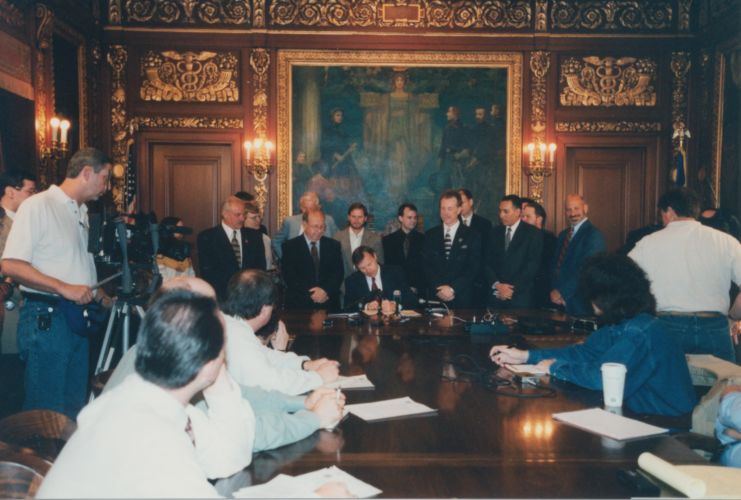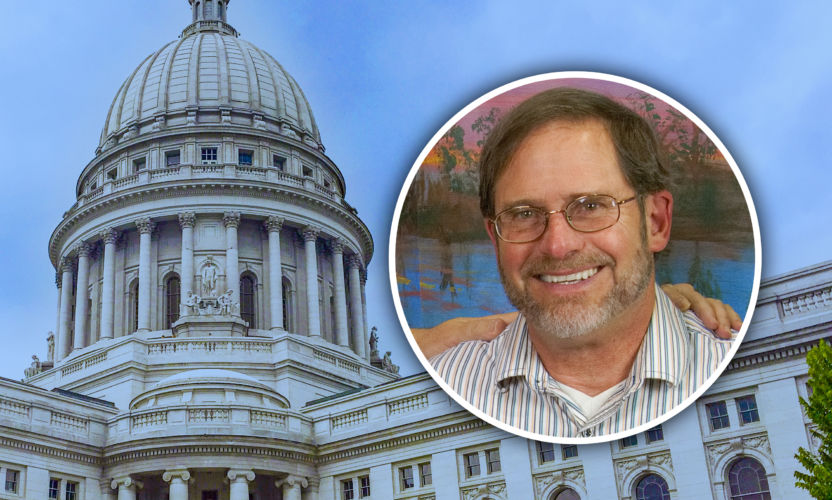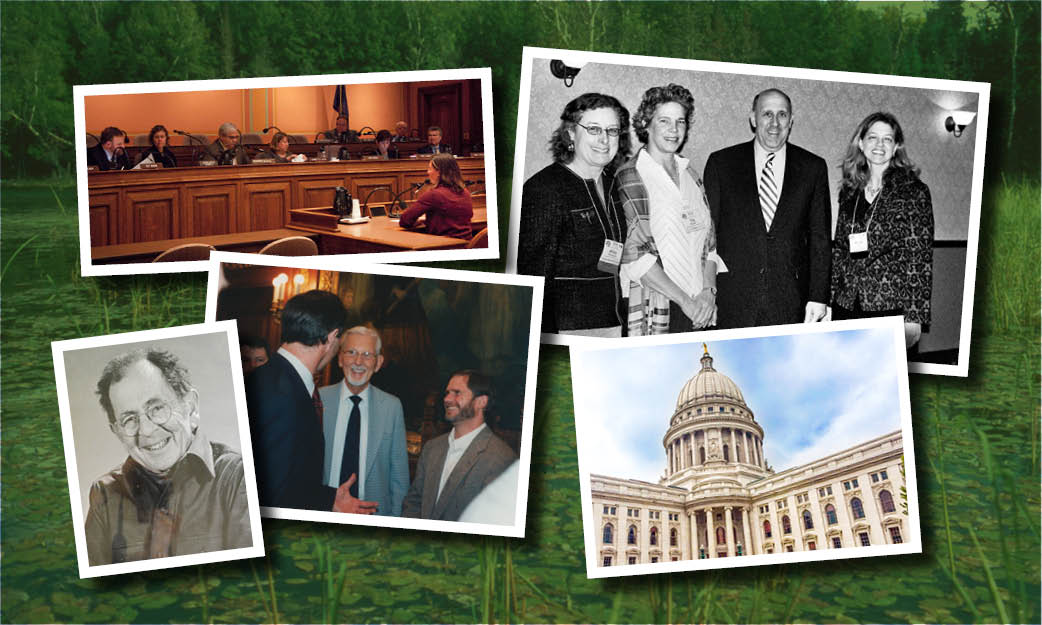In recognition of our 50th Anniversary this year, we will be sharing reflections and stories of Wisconsin Wetland Association (WWA) leaders from throughout the last 50 years. Below, WWA’s first Executive Director, Charlie Luthin, reflects on the ever-changing landscape of wetland policy.
When I first got involved in wetland conservation, it quickly became apparent that wetlands often occupy a “gray area” between water and land. The scientific and conservation communities often disagree with development communities on what constitutes a wetland and what constitutes a protected wetland. Despite almost 50 years of wetland policies and regulation, this gray area persists. As a result, wetlands often constitute a “tension zone” between conservation and development interests. Sadly, we have already lost a significant amount of the “gray area,” and we need to make sure we don’t lose any more. The “line in the wet sand” is constantly changing and being challenged—it’s often two steps forward and one back.

Charlie Luthin (pictured in the brown blazer), joins legislators for signing the 2001 “isolated” wetlands bill into law.
Take, for example, the protection of “isolated” wetlands. During my tenure as Executive Director of WWA in the late 1990s and early 2000s, we were taking steps forward convincing regulators and agencies that isolated wetlands are part and parcel of our entire water heritage that needs to be cherished and protected. In early 2001, however, a truly disastrous decision by the U.S. Supreme Court put the federal protection of an estimated one million acres of isolated wetlands in Wisconsin immediately at risk. In response, a large coalition of diverse conservation groups in Wisconsin—facilitated by WWA—acted quickly to “fill the gap” by proposing state protections of isolated wetlands. Within six months, we had a new isolated wetland bill unanimously signed into law. Wisconsin was the leader among states across the nation to fill the wetland gap created by the federal court decision.
Sadly, the relief from such a victory was relatively short-lived. Within ten years, the tide of anti-regulatory sentiment was high in Wisconsin and nationwide, resulting in many attempts to roll back our state’s wetland protections. And in 2018, a strong effort to reverse protective measures for isolated wetlands in Wisconsin ensued. As in 2001, it was necessary again for WWA and its partners to work together to try to uphold the protection of our isolated wetlands, this time with mixed results. Two forward, one backward. The important work continues.
Efforts to challenge wetland protections will continue, and groups like WWA are of great importance to protecting our wetland legacy. As we look to the next 50 years, I encourage our wetland community to continue strengthening current partnerships and building relationships in new places. You never know when you may need allies to help fight unwanted efforts to change policies once thought inviolate.
Related Content
50 years of wetland conservation: Improving wetland policies and practices
Look back at how our approach to wetland policy has evolved since our beginnings.
Stories from 50 years: Marita Valencia
Marita Valencia can trace her wetlands career back to her time as a volunteer with WWA.



